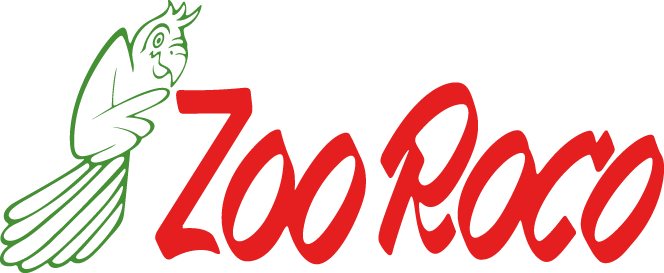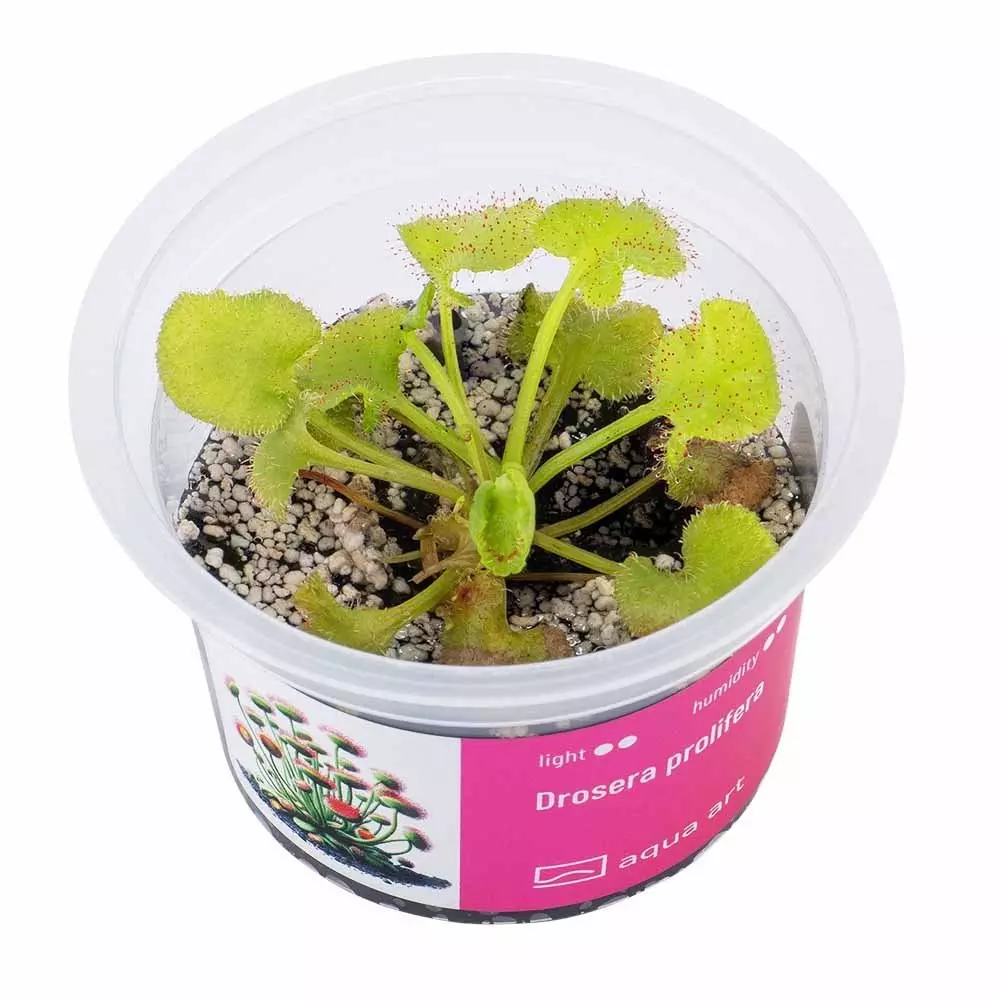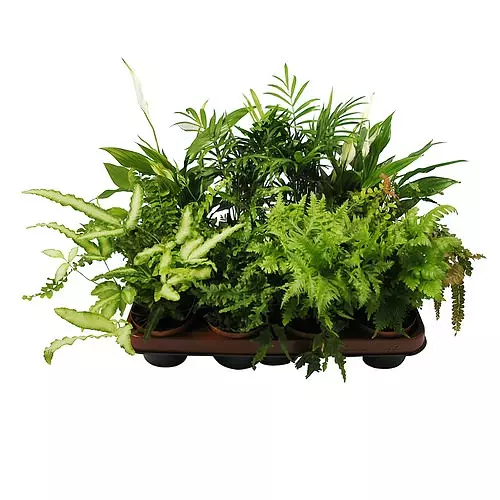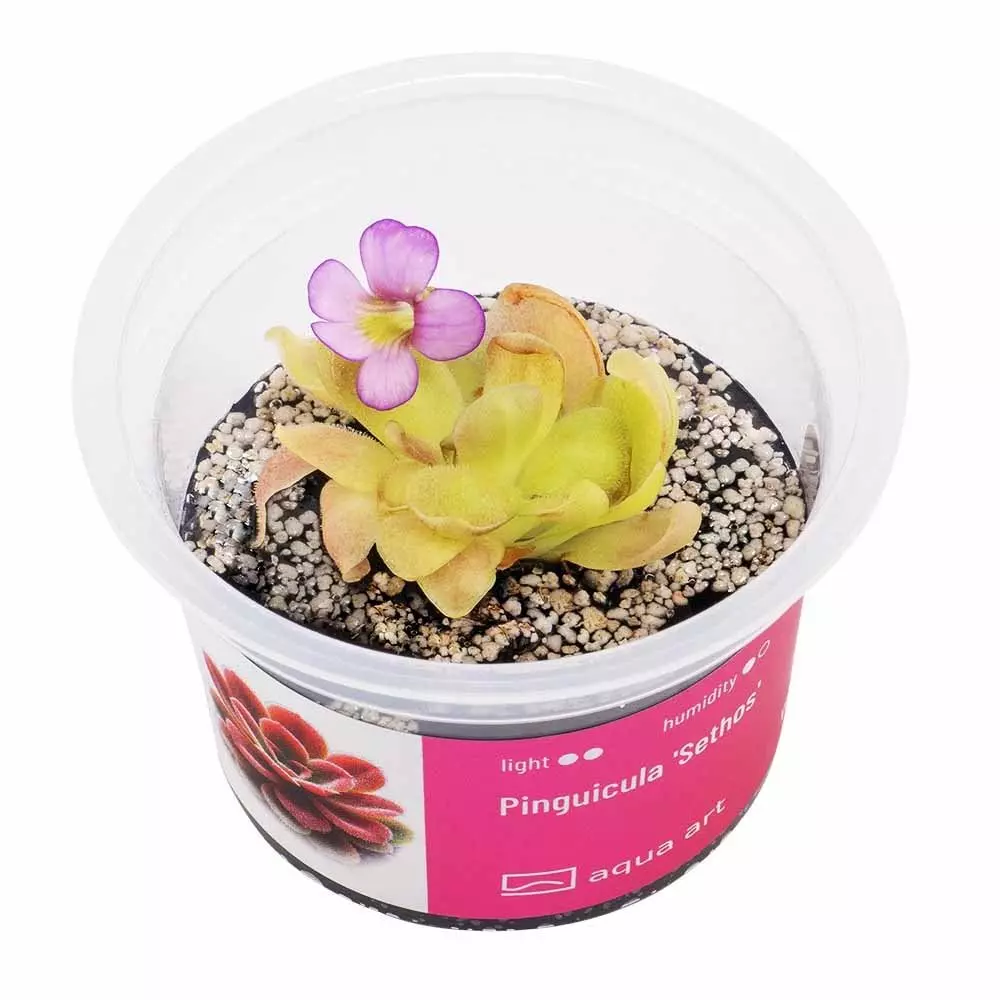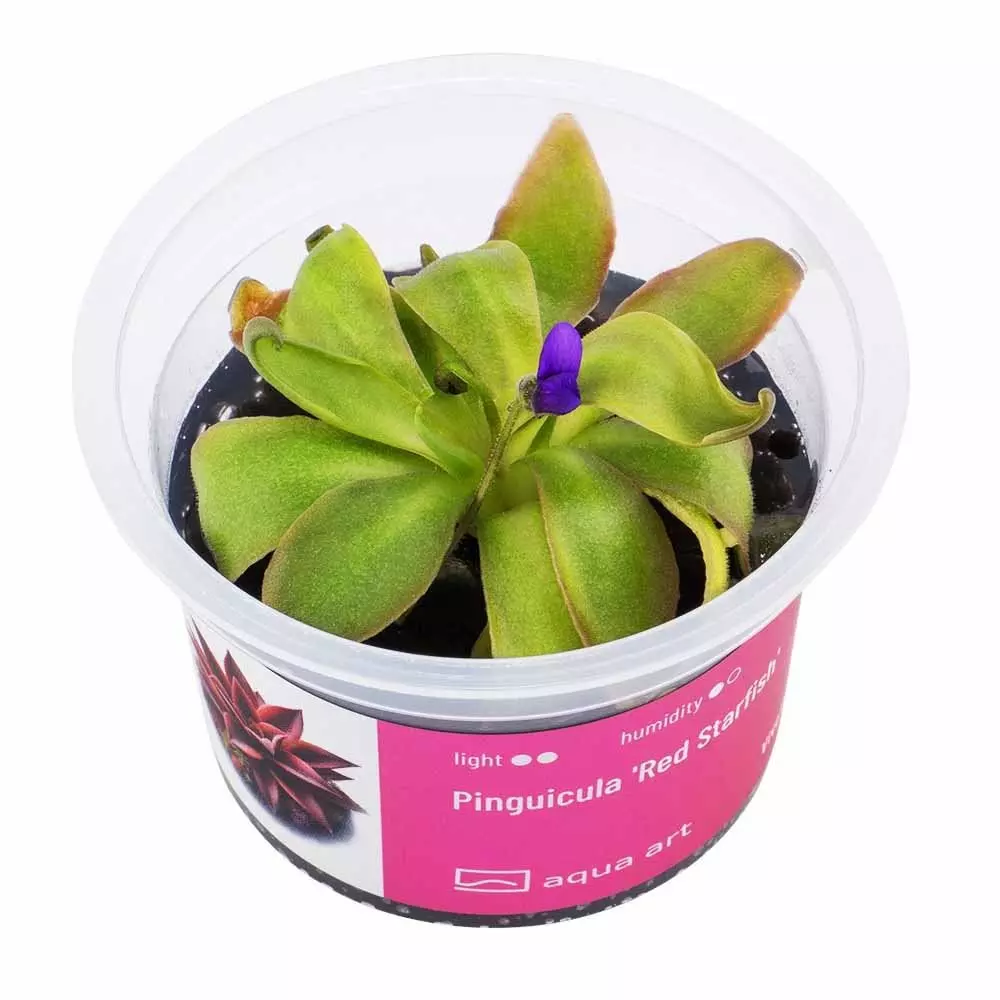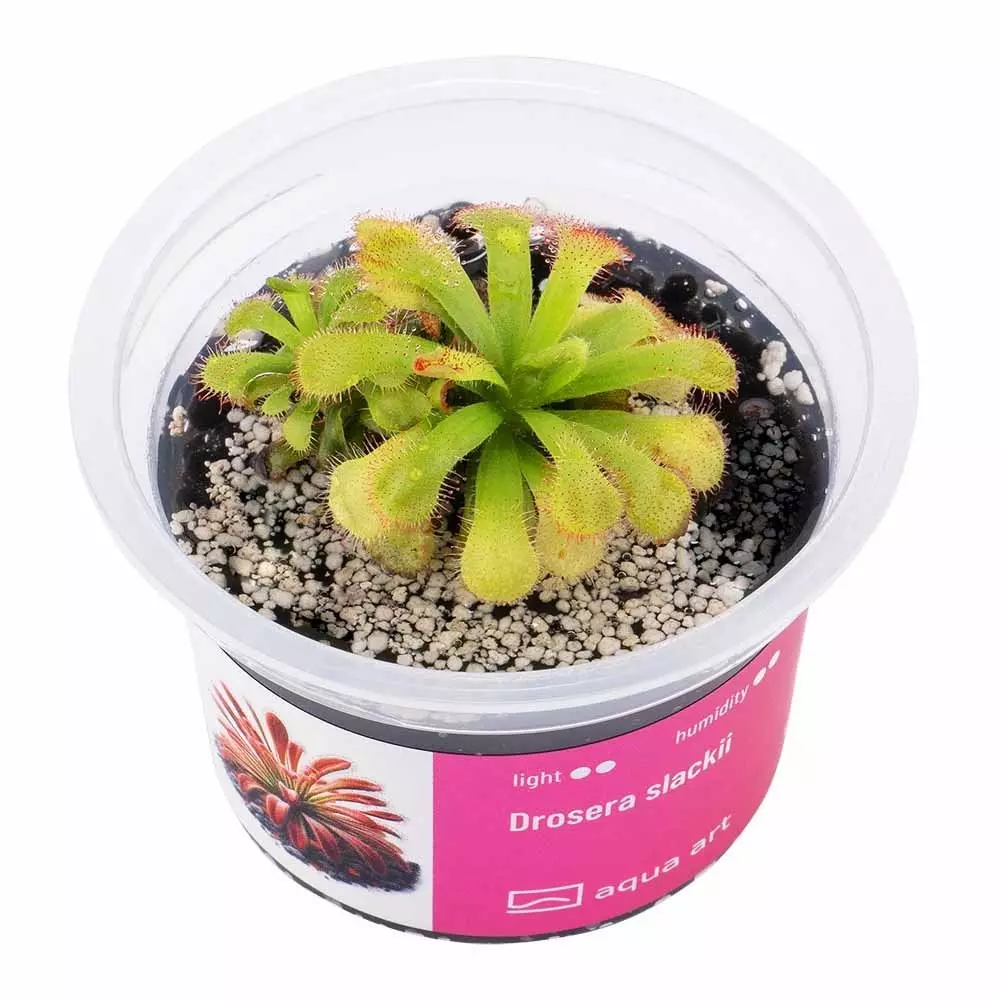
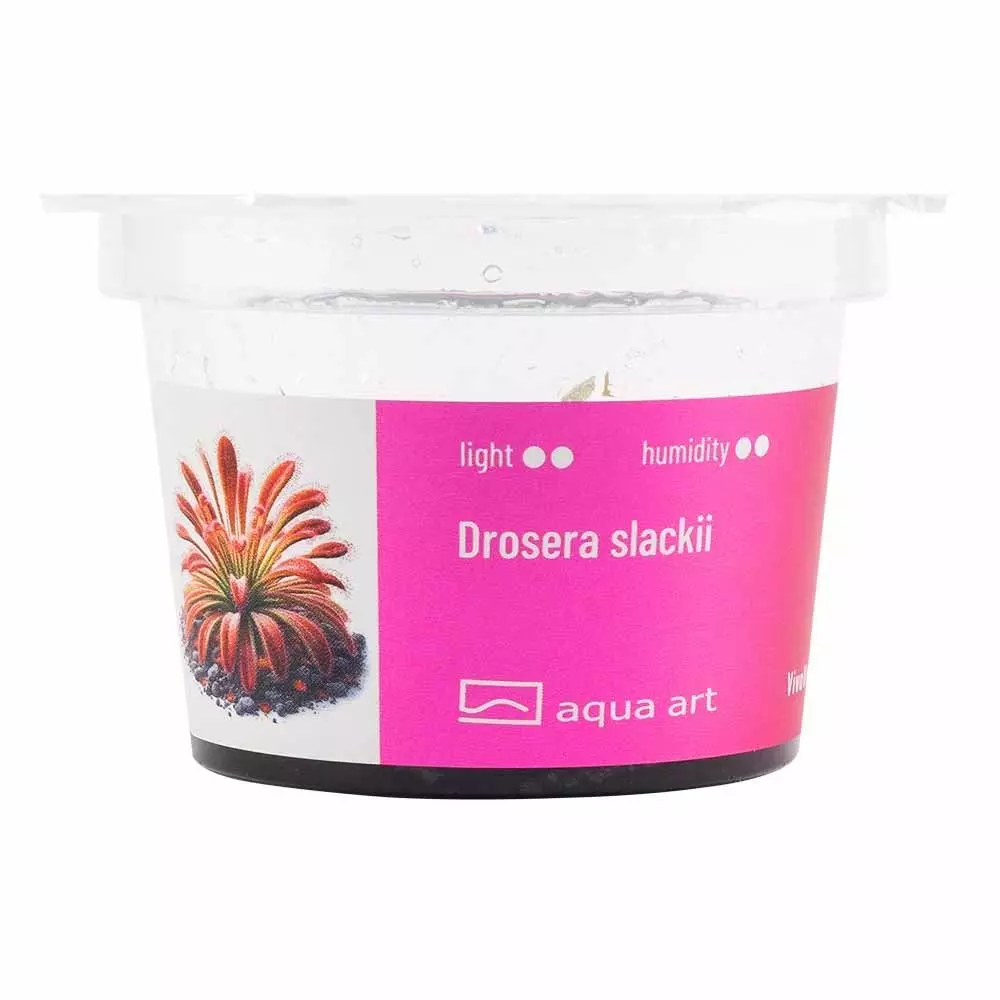














CHF 9.90
Stock: 3
Available, delivery time: 1-3 days

Carnivorous plant - Drosera slackii
- supplied in an in vitro cup
- Rosette up to 10 cm in diameter
- Can be placed in direct light, but prefers diffuse light
- Humidity: 50-70 %
- Temperature: 18-25 °C during the day and 10-15 °C at night
- Purple flowers
The rosette can grow e up to 10 cm in size. D. slackii grows upwards and the dead leaves form a dead leaves form a thick stem.
Flowers:
The flowers are purple and rarely form seeds.
Light:
Drosera slackii prefers bright, diffuse light. It can grow in full sun, but at home it is best to provide it with intense light with minimal direct sunlight to avoid leaf burn.
Substrate:
The best substrate for Drosera slackii is a mixture of sphagnum peat and sand or perlite in a 2:1 ratio. The substrate should be acidic (pH 4.5-5.5) and well-drained.
Slack sundew requires constant moisture in the substrate. It is best watered with distilled, demineralized or rainwater, although tap water should be avoided. The substrate should be moist but not flooded.
Feeding/ fertilizing:
The sundew does not need fertilizer. It takes its nutrients from the insects it catches. Occasionally you can feed the plant with small insects such as fruit flies.
This plant prefers moderately high humidity, usually around 50-70%. Regular spraying and the use of misting are sufficient.
The Slackii sundew grows best under moderate temperature conditions. The optimum range is 18-25 °C during the day and 10-15 °C at night
Propagation:
Propagation is by seed. Grows slowly
0 of 0 reviews
Login
Customers also bought
Similar products
Customers also viewed
